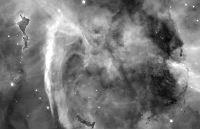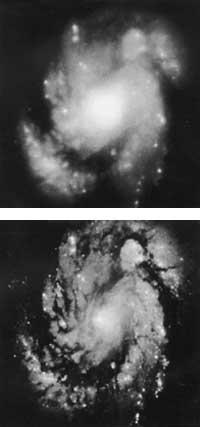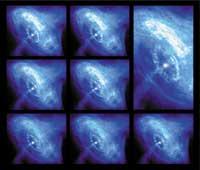Hubble Space Telescope at your disposal
2009/02/22 Lakar Iraizoz, Oihane - Elhuyar Zientzia
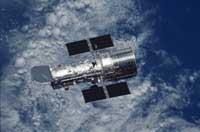
Hubble has never looked at the six bodies that have been chosen. Therefore, the contest organization has only displayed images in low definition, small and in black and white. Hubble looks at one of them and, then, yes, will offer much more detailed images. In addition to color images, you will get very useful information from Hubble images for astronomers.
Six candidates, three teams
The proposed candidates can be divided into three groups. In the first group, a photo is an area where stars are formed, a giant cloud of interstellar gas and dust at 5,500 light-years from us. The stars are formed by collapsing and compacting this type of clouds. The stars are large clusters of matter.
Those who do not like the birth of stars can choose between looking at the death of Hubble stars. Two bodies called planetary nebulae have been proposed, which are created when stars of similar size to the Sun die. In the nebulae, the gas that propagates when the nucleus explodes is observed. They say they are one of the most “photogenic” objects in space, since they are usually very colorful.
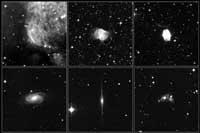
They have only been able to display the black and white images of the candidate objects. (Photo: DSS, STScl, Palomar/Caltech and UKSTU).
The other three candidate objects are galaxies, sets of millions and millions of stars. The three are galaxies, but each has a particularity that the others do not have. One of the galaxies is seen face to face. It is a spiral galaxy in which are seen the characteristic arms of this type of galaxies that give galaxies a fan shape. The arms are special because in them the birth of the stars occurs.
The second galaxy is also a spiral galaxy, but instead of being in front of it, it is transverse to us, so Hubble would get the side image of the galaxy. This view is very important for astronomers, since in this way they can see details that they do not see in front.
And finally, the third image of the group of galaxies is formed by two galaxies in interaction. They are two adjoining spiral galaxies that pass one after the other and that are causing the gravity of one in the other. Gravity causes the two galaxies to lose spiral shape. What happens is that relatively recently the interactions began and have hardly been distorted. In the photo they look pretty good one and the other, but if Hubble did it they would look in much more detail.
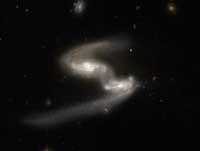
Hubble has looked before other galaxies in interaction. (Photo: NASA, ESA and Hubble)
These are the candidates. Therefore, the decision on which one of them will look depends on who wants. As in all competitions and competitions, in this there is also a favorite. In this case it is the image of the two galaxies in interaction. It has been the first place since the beginning and several experts believe it will be the winner. They say that from there it will be where astronomers have more information, and that is why it is what most “deserves”.
However, there is still nothing decided. The deadline to vote is open until March 1.
Published in 7K.

Gai honi buruzko eduki gehiago
Elhuyarrek garatutako teknologia




